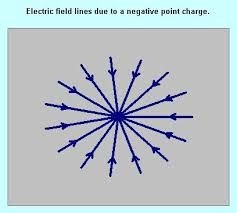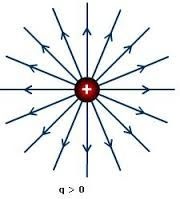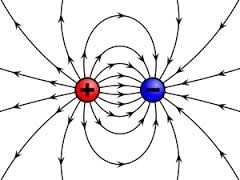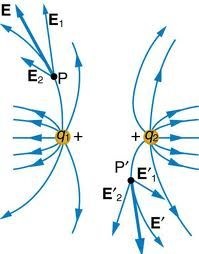The concept of electric field vector was not appreciated by Michael Faraday, who always thought in terms of lines of force. Although we no longer attach the same reality to these lines of force that Faraday did, they still provide a convenient and instructive way to visualize the electric field.
Properties of lines of force:
1).. The electric lines of force around a positive charge are directed away from the charge. The lines of force give the direction of electric field at any point. In complex patterns, the tangent to the lines of force give the direction of electric field at that point. A positive test charge, when released at any point in the vicinity of the positive charge, would experience a repulsive force that acts radially outward., and the test charge would move in that direction.


2).. The lines of force originate at positive charge and terminate at negative charge. If a positive and a negative charge are placed at some distance from each other and a test charge is placed between them. Then the test charge would move from positive charge towards the negative charge, thus indicating that the lines of force originate at positive charge and terminate at negative charge.

3).. The lines of force are drawn so that the the number of lines per unit cross-sectional area is proportional to magnitude of electric field. Imagine an element of spherical surface of a given area close to the point charge, where many lines of force would penetrate it. As we move that area radially outward, fewer lines of force penetrate the area, because the lines of force are farther apart away from the charge.This corresponds to the decrease of the electric field with increasing distance from the charge.

If the point charge were negative then the pattern of lines of force would be the same except that the direction would be inward. The force on the positive test charge would be radially inward.



